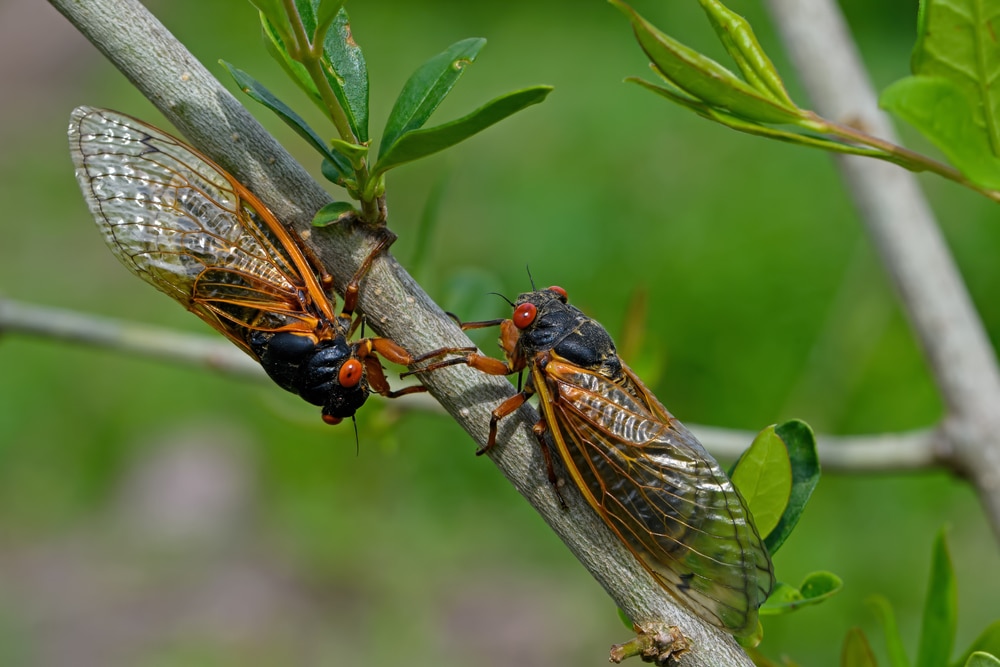Sometime late this spring, under a cloak of darkness, a horde of bulbous-eyed insects will emerge from underground, where they’ve spent most of their lives feeding from the sap of tree roots.
They will scurry up the first trees they can find, leaving behind their exoskeletons as they molt, shedding old shells as they develop those trademark wings.
The males will soon begin to emit a buzzing noise, before the female bugs join them in a chorus of clicks—a cacophony of mating sounds that will swell in a matter of days.
This unique natural symphony will serve as an unmissable signal that two broods of cicadas have emerged from belowground for a rare, dually-occurring return to the world above.
“That sound can be so loud,” said Tamra Reall, an entomologist and horticulture field specialist at the University of Missouri who goes by ‘Dr. Bug.’ The noise can reach 100 decibels, she noted. “About the level of a jet engine.”
Beginning anytime between late April to June, the two broods will emerge in 17 states spanning the Southeast to the Midwest. “It will be a bigger year than most,” said Reall. “This is a magical event.”
It has been 221 years since these particular broods last emerged together. It was 1803 the last time this phenomena occurred, when Thomas Jefferson was still in office.
And according to Reall, it won’t take place again until 2245. “It won’t happen again for these two broods until our great-great-great grandchildren will be around,” she said.
Unlike annual cicadas—the flying bugs we see pop up every summer—periodical cicadas only emerge en masse on a recurring 13 or 17-year cycle. Most species tend to have black bodies, red eyes, and red-orange wing veins—a distinct coloring not found on larger and greener ‘dog day’ annual cicadas.
Geography also sets these insects apart. Periodical cicadas can only be found in North America, while annual cicadas can be spotted worldwide. This year’s dual event will feature Brood XIII—which emerges every 17 years in the Midwest, and includes sections of Illinois, Indiana, Iowa and Wisconsin—and Brood XIX.







